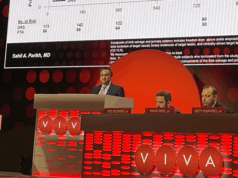
Tze Tec Chong (Singapore General Hospital, Singapore) presented results from the PRISTINE registry at this year’s Cardiovascular and Interventional Radiological Society of Europe (CIRSE) 2023 annual meeting (9–13 September, Copenhagen, Denmark), which aimed to investigate the performance and safety of the Selution SLR (MedAlliance) sirolimus-eluting balloon (SEB) for the treatment of complex occlusive lesions in chronic limb threatening ischaemia (CLTI) patients in Singapore. He highlighted their “[achievement] of technical success” and freedom from device- or procedure-related mortality, which Chong reported were 100% respectively at 12-month follow-up.
First expositing the intentions of the trial to the audience, Chong described the prospective, single-arm, single-centre study, which includes patients with a Ruthford classification between four and six, and TASC II C or D lesions. He defined their primary endpoints as freedom from mortality, major amputation and clinically-driven target lesion revascularisation (CD-TLR), and procedure-related mortality through to 30 days, and to six months.
Detailing patient demographics, Chong then conveyed their collected Wound, Ischemia, and foot Infection (WIfI) classification data which revealed an average score of 4.07 in their population, which, he stated, is indicative of “severe” disease. Additionally, he continued to note that, based on this average, these patients are “at significant risk of amputation” and fall within moderate- to high-risk risk categories.
Of their outcomes, Chong stated that 100% technical success was achieved in all patients, as well as device or procedure-related mortality, although two patients were lost to follow-up. Looking at the data with more granularity, Chong highlighted that amputation-free survival at 12-months was 72.6%, which he asserted is “in line with the type of patients we treat, and quite reasonable in a population that is more than 90% diabetic and 30% with renal failure”. Furthermore, he underlined that complete wound healing was achieved in 79.2% of their population at 12-months.
Concluding his presentation with a case study from the PRISTINE patient cohort, Chong reiterated the key continued patency of the Selution SEB from six to 12 months, noting finally that, “in these difficult to treat vessels, this target lesion primary patency rate is quite acceptable.”










